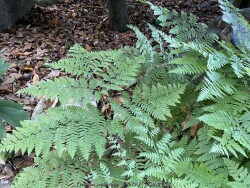
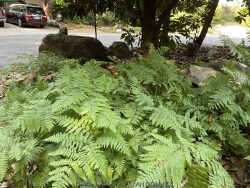
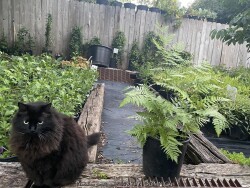
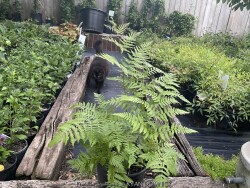
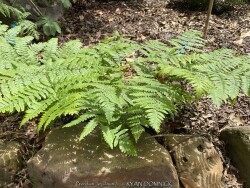
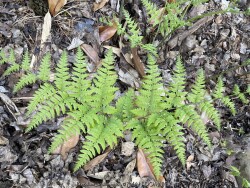
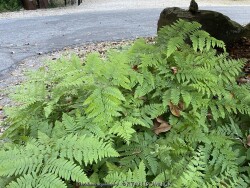

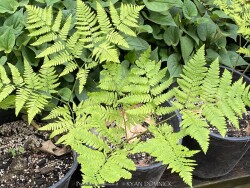
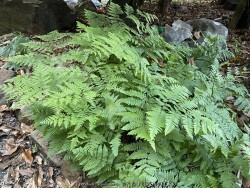
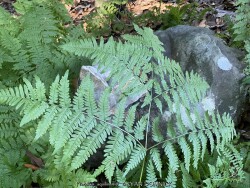
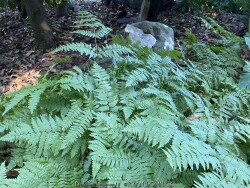
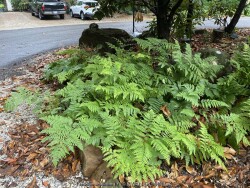
Plant Min Zone: 3a
Plant Max Zone: 10b
Sunlight: Part Sun, Shade, Deep Shade
Water / Rainfall: Average
Soil Quality: Poor, Average, Rich
Bloom Season: None
Flower Color: None
Berry / Fruit Color: None
Spring Foliage Color: Green
Summer Foliage Color: Green
Fall Foliage Color: Green
Evergreen Foliage: No
Winter Interest: No
Scented Flowers: No
Drought Tolerance: Medium
Wet-Feet Tolerance: Medium
Humidity Tolerance: High
Wind Tolerance: Low, Medium
Poor Soil Tolerance: Clay Soils, Sandy Soils, Rocky Soils, Acidic Soil (low PH)
Height: 2' - 3'
Width: 2' - 3'
Growth Rate: Slow, Medium
Service Life: Very Long: 10-20 years
Maintenance Need: Medium
Spreading Potential: Medium
Yearly Trimming Tips: Trim Perennial to Ground Around First Fall Freeze: No Winter Interest.
Plant Grouping Size: Small Grouping of 3-5
Best Side of House: East Exposure, North Exposure
Extreme Planting Locations: Tolerates Damp Full Shade, Base of Retaining Wall Locations
Ornamental Features: Multiple Seasons of Interest
Special Landscape Uses: Groundcover, Erosion Control
Possible Pest Problems: Weed Competition
Plant Limitations: Needs Regular Irrigation, Aggressive Rhizomes / Runners
Shippable in 2026: YES
Bracken Fern (Pteridium aquilinum) is planted for its coarse, divided, triangular fronds in a medium green color. Native to all continents in the Northern Hemisphere, it forms large colonies in forests with poor to average soil in sun to shade preferring sandy or peaty acidic soils. It colonizes medium to dry woodland areas, fields, old pastures, thickets, areas with disturbed soils, burned-out areas, and marsh edges. It can handle some Kansas drought in slightly acidic moisture-retentive soils but not full-on dry-shade. Foliage finally dies back to the ground in early autumn with "fiddle-heads" emerging and unfurling in mid-spring. Generally this plant holds its own in Kansas climates but fails to spread very quickly. Leaves can depreciate considerably in extremely hot weather and/or too much sun, particularly if soils are allowed to dry out to extremely. Root rot may occur in wet, poorly drained soils. With proper siting, it can be a "Once it's there, it's there forever" plant! I have seen an established planting thriving on the north side of a house for 20 plus years in Lawrence, KS.